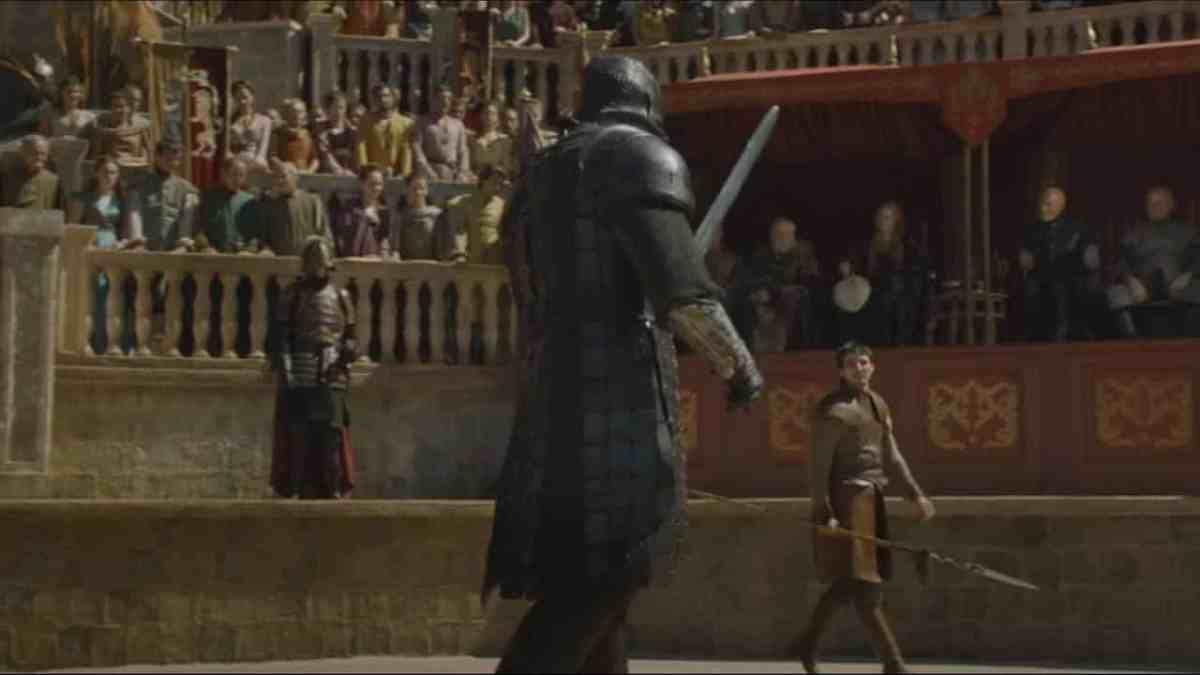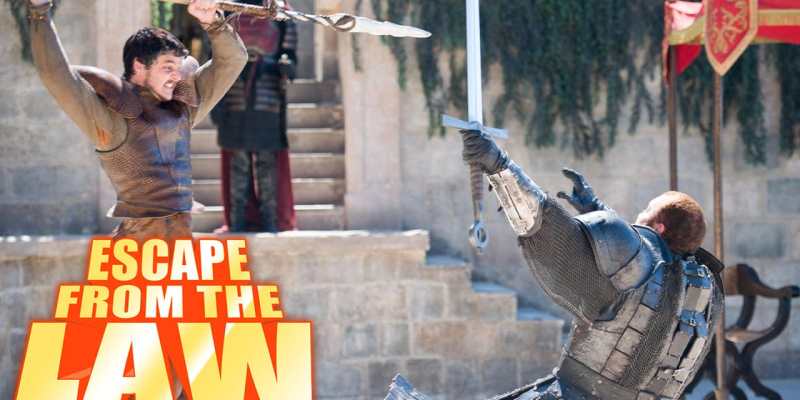A Kansas man recently made the news after asking a judge for permission to resolve a custody battle through “trial by combat.” As the name suggests, “trial by combat” is a method of resolving legal disputes through a bout of combat. While it’s not clear when this phenomenon began, historical records show that the procedure was used in Europe as early as the 400s, and it was regularly used through the 16th century. From a legal perspective, trial by combat lost any of its lingering relevance in the 1700s. The procedure never caught on in the United States, and England abolished the practice in the early 1800s.
Notwithstanding its legal obsolescence, trial by combat has recently come to the attention of the nerd-public after it was featured prominently in Game of Thrones and in other science fiction and fantasy stories, including Star Trek, The Flash, and Dragon Age, among others. Given the prominence of trial by combat in today’s pop culture, some people — including the Kansas man — have started to wonder whether the practice could make a comeback. The answer is… kind of.
Let’s make one thing clear from the start — trial by combat, as traditionally understood and as depicted in Game of Thrones, is gone, and it’s not coming back. (It’s even gone in the world of Game of Thrones.) At its core, trial by combat is inextricably linked with religious beliefs and with understandings of God and divine will. Like any other legal “trial,” the purpose of trial by combat was to settle a dispute of fact. The assumption underlying the trial was that God would ensure that the “correct” side won the trial. In other words, trial by combat was viewed as an ironclad way to discern the truth.
Accordingly, the results of the trial provided definitive evidence that the victor’s position (whatever it was) was correct. Thus, trial by combat was not simply viewed as a means to defend one’s honor, nor was it used as part of a “might makes right” philosophy. Instead, the best way to understand trial by combat is to think of it as a more powerful lie detector, or as a somehow-omnipresent video camera — it’s a test that provides incontrovertible evidence of what happened.

The close connection between trial by combat and religious beliefs explains why trials by combat are not going to return. Society’s religious beliefs have fundamentally changed since the 400s, and people no longer believe that the outcome of a fight provides divine insight into the truth. As a result, there would be no value served in using trial by combat in today’s judicial proceedings.
The origin of trial by combat was obviously lost on the Kansas man who recently attempted to invoke the procedure, just as it was lost on a New York lawyer who requested trial by combat to resolve a dispute over unpaid legal fees. Based on interviews, the New York lawyer views trial by combat as a way to defend his honor, rather than as a means to prove the validity of his legal claims.
But that’s not the end of the story. While traditional trials by combat have gone away, they still have a role to play in conflict resolution. Parties to a contract can create pretty much whatever rules they want to resolve conflicts or disputes. This is why many contracts include mandatory arbitration provisions and why contracts frequently include “choice of law” provisions that require courts to interpret the contract in accordance with the laws of a particular state.
But arbitration and “choice of law” provisions are boring. If people wanted to, they could include a clause in their contract that requires the parties to resolve their disputes through a procedure resembling trial by combat. While the procedure would only be enforceable if the “combat” is not dangerous or lethal, that could still provide the parties with plenty of trial by combat options.

Amazingly, this type of contractually mandated trial by combat is not completely unheard of. Former UFC co-owners Frank and Lorenzo Feritta had a clause in their contract mandating that any business disputes be resolved through a three-round jiu jitsu match, which was to be refereed by former UFC commissioner Dana White. In the early 1990s, Southwest Airlines and Stevens Aviation agreed to settle a trademark dispute with arm wrestling. More recently, Twilight star Taylor Lautner turned down an offer to settle a lawsuit with a push-up competition. These examples are just the tip of the iceberg. Going forward, parties so inclined could decide to resolve contractual disputes through a round of Jeopardy, a paintball tournament, a laser tag match, a fencing competition, or even a marksmanship challenge.
While some might think that this type of non-traditional dispute resolution is silly, it actually has several distinct advantages over traditional litigation. For one thing, it allows parties to resolve their disputes quickly and in a definitive fashion. Trials and court procedures are slow and can take years to reach their conclusion (and even at the end, parties often end up feeling like the outcome is not fair). Modified “trials by combat” also allow parties to avoid the expense and hassle of lawyers and court fees. They even allow the parties to promote their brand by choosing a conflict resolution method that has a meaningful connection to their industry — for example, it is certainly fitting that a UFC-related dispute would be resolved through a jiu jitsu tournament. Finally, trial by combat, even in this reduced, safe form, is cool.
The disappearance of traditional “trial by combat” was clearly a positive development. The trials followed the same broken logic as the Salem Witch trials and unfairly favored the strong over the truth. But inside every broken idea is the seed of inspiration, and trials by combat are no exception. In today’s society, millions of dollars are wasted on long and expensive trials and similarly long and expensive arbitrations. If performed safely, a mutually agreed upon faux trial by combat can allow parties to resolve their disputes quickly, cheaply, and in style. While these “trials” are not yet commonplace, there is a strong argument to be had that they should be. And if you think I’m wrong, I’ll show you otherwise on the field of Scrabble.
